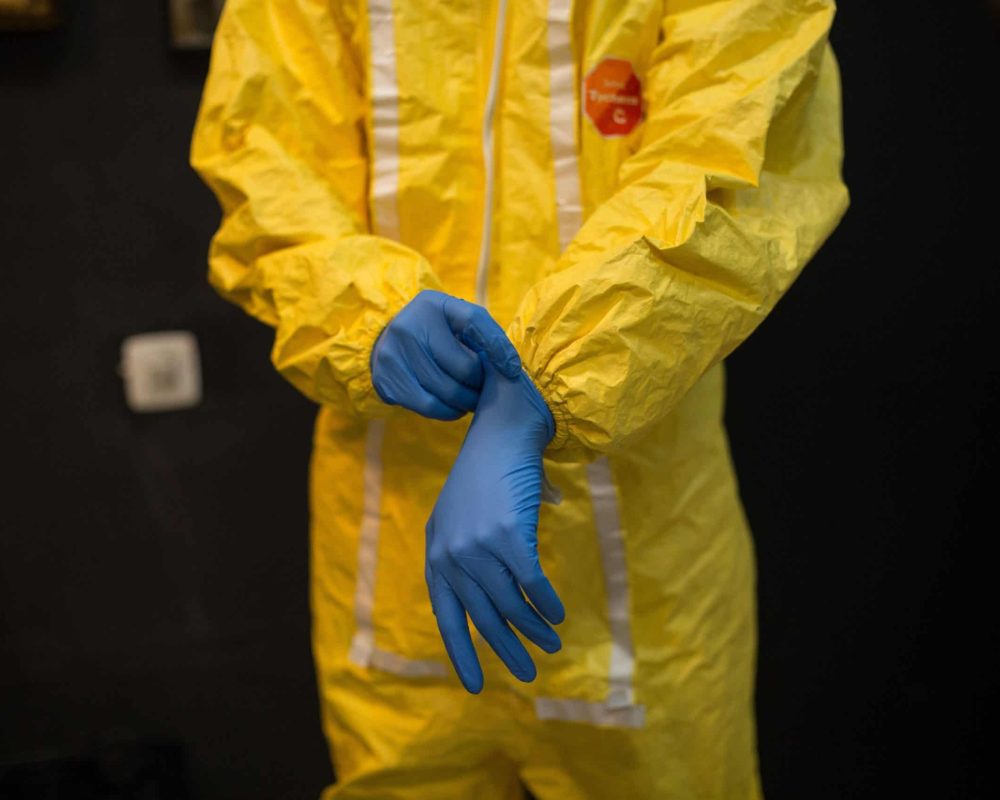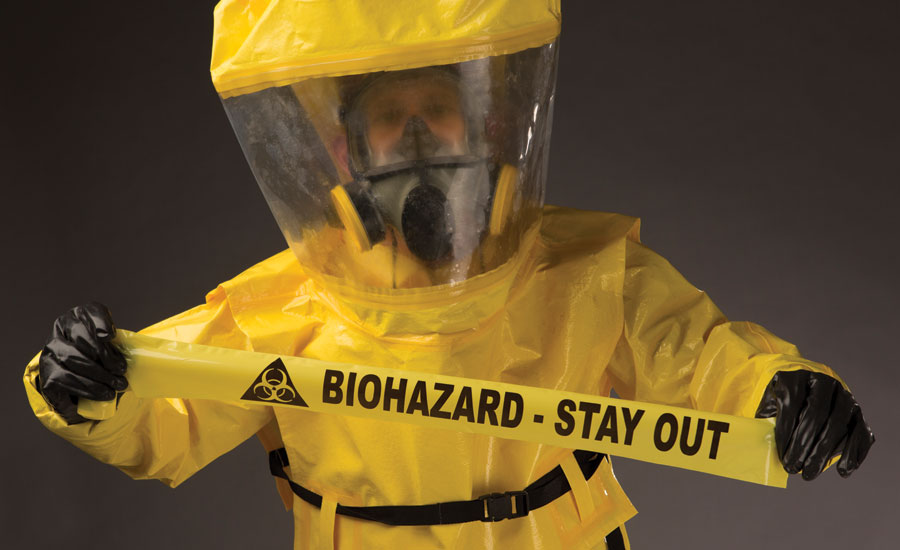Mold Remediation Solutions: Securing Your Residential Or Commercial Property from Mold Damage
Mold Remediation Solutions: Securing Your Residential Or Commercial Property from Mold Damage
Blog Article
Professional Biohazard Cleaning and Purification for Blood, Bodily Fluids, and Hazardous Products
The potential wellness risks linked with direct exposure to biohazards highlight the vital demand for precise handling and thorough clean-up. As we browse the elaborate landscape of biohazard clean-up, understanding the nuances of regulations, compliance, and the specific equipment at play ends up being vital in ensuring a comprehensive and secure purification process.
Health And Wellness Threats of Biohazard Direct Exposure
Exposure to biohazards presents substantial health risks that can lead to serious repercussions for communities and individuals alike. Biohazards include a vast array of biological substances, including blood, physical fluids, mold, germs, infections, and various other potentially contagious products. When people enter into contact with these biohazards, whether with crashes, improper handling, or environmental exposure, they face the danger of contracting significant diseases or illness.
Among the main health and wellness dangers related to biohazard direct exposure is the transmission of transmittable diseases. Bloodborne pathogens such as HIV, hepatitis B and C, and various bacteria can be present in biohazardous products, positioning a direct danger to human health and wellness. Breathing in airborne biohazards like mold spores or entering into call with infected surface areas can additionally bring about respiratory system concerns, allergic reactions, and various other negative health and wellness results.
In addition, biohazard exposure can have lasting wellness implications, with some conditions showing up years after the first get in touch with (Blood Cleanup). As a result, it is critical to focus on correct biohazard cleansing and decontamination to mitigate these health risks and ensure the safety of neighborhoods and individuals

Specialized Educating for Biohazard Cleanup
When it comes to handling biohazard clean-up successfully and securely, specialized training plays a basic function in making certain appropriate purification procedures are complied with. Biohazard cleaning requires particular expertise and skills to efficiently mitigate dangers related to bloodborne pathogens, bodily liquids, and unsafe materials. Professionals trained in biohazard clean-up undertake strenuous direction on just how to securely handle, eliminate, and dispose of biohazardous materials to stop contamination and direct exposure.
Specialized training for biohazard cleaning covers a series of important topics, consisting of appropriate individual safety tools (PPE) use, bloodborne virus awareness, decontamination techniques, and dangerous waste disposal procedures. Individuals trained in biohazard cleanup are furnished with the needed knowledge to examine contamination degrees, determine prospective dangers, and carry out ideal cleaning treatments in conformity with regulative criteria.
Constant training and education and learning are vital in the area of biohazard clean-up to stay updated on the most up to date decontamination technologies, safety procedures, and guidelines. By purchasing specialized training, biohazard cleanup professionals can effectively react to emergency situation clean-up circumstances and protect both public health and the setting.
Relevance of Appropriate Decontamination Techniques
Making use of correct decontamination techniques is critical in biohazard clean-up to biohazard cleanup article efficiently eliminate unsafe materials and reduce health threats. Effective decontamination not only ensures the elimination of visible traces of blood, bodily fluids, and various other biohazards but additionally targets unnoticeable pathogens that may pose severe health hazards if not effectively gotten rid of. By adhering to strict decontamination methods, educated professionals can dramatically minimize the threat of exposure to unsafe bacteria, infections, and bacteria that might bring about conditions or infections.
Proper decontamination strategies involve using specific tools and disinfectants that are particularly made to neutralize biohazards successfully. Comprehensive cleansing and sanitation of contaminated areas are necessary to avoid the spread of virus and ensure a risk-free atmosphere for owners. Additionally, the correct disposal of biohazardous waste complying with purification treatments is essential in avoiding contamination of various other surfaces or people.

Equipment and Tools for Safe Cleanup
When dealing with blood, bodily liquids, or hazardous products, biohazard cleaning professionals count on specialized gear to lessen exposure dangers and thoroughly decontaminate the damaged area. In addition, biohazard cleaning sets having disinfectants, absorbing products, and biohazard bags are used to securely get rid of and contain of polluted things.
Advanced cleaning tools like hospital-grade anti-bacterials, HEPA-filtered vacuums, and fogging equipments are employed to try this site sanitize surface areas and get rid of biohazards efficiently. Specialized devices such as sharps containers and biohazard garbage disposal bins are used to securely take care of sharp objects and biohazardous waste materials. By using the appropriate equipment and tools, biohazard cleaning experts can make sure a comprehensive clean-up procedure that prioritizes security and lessens wellness threats for both workers and residents of the afflicted area.
Laws and Compliance in Biohazard Cleaning
Proper adherence to guidelines and conformity standards is vital in biohazard cleansing to make certain the safety i thought about this of both workers and the setting. Federal government companies such as OSHA (Occupational Safety And Security and Health And Wellness Management) and the EPA (Environmental Defense Agency) have developed details standards for biohazard cleaning treatments to decrease wellness dangers and ecological contamination. These policies cover a variety of facets including the handling, transport, and disposal of biohazardous materials, in addition to the needed training and safety devices required for personnel associated with the cleanup process.
Biohazard cleansing firms need to stay up-to-date with these regulations to assure that their procedures satisfy the required safety criteria. Failing to comply with these regulations can cause serious consequences, including penalties, lawsuit, and jeopardizing the health and wellness of individuals and the setting. By complying with strict regulations and conformity actions, biohazard cleansing companies can effectively minimize dangers and guarantee a risk-free and comprehensive cleaning process for all events included.
Conclusion
In verdict, biohazard cleansing and purification require specific training, proper methods, and adherence to regulations. Direct exposure to blood, bodily fluids, and unsafe materials postures considerable wellness dangers, making it important to use the ideal equipment and tools for secure cleanup. By complying with strict procedures and standards, professionals can successfully mitigate the risks connected with biohazard exposure and ensure the security of both themselves and others.
As we navigate the complex landscape of biohazard cleaning, understanding the nuances of guidelines, conformity, and the specialized devices at play ends up being essential in making sure a secure and comprehensive decontamination process. (Blood Cleanup)
When it comes to managing biohazard cleaning successfully and securely, specialized training plays a fundamental role in guaranteeing appropriate purification treatments are complied with.Making use of correct purification strategies is important in biohazard cleanup to properly reduce and get rid of dangerous materials health risks. Additionally, biohazard cleaning kits including disinfectants, absorptive materials, and biohazard bags are used to safely get rid of and have of infected products.
Government agencies such as OSHA (Occupational Safety and Health And Wellness Administration) and the EPA (Environmental Security Agency) have developed certain guidelines for biohazard cleanup treatments to decrease health and wellness dangers and environmental contamination.
Report this page